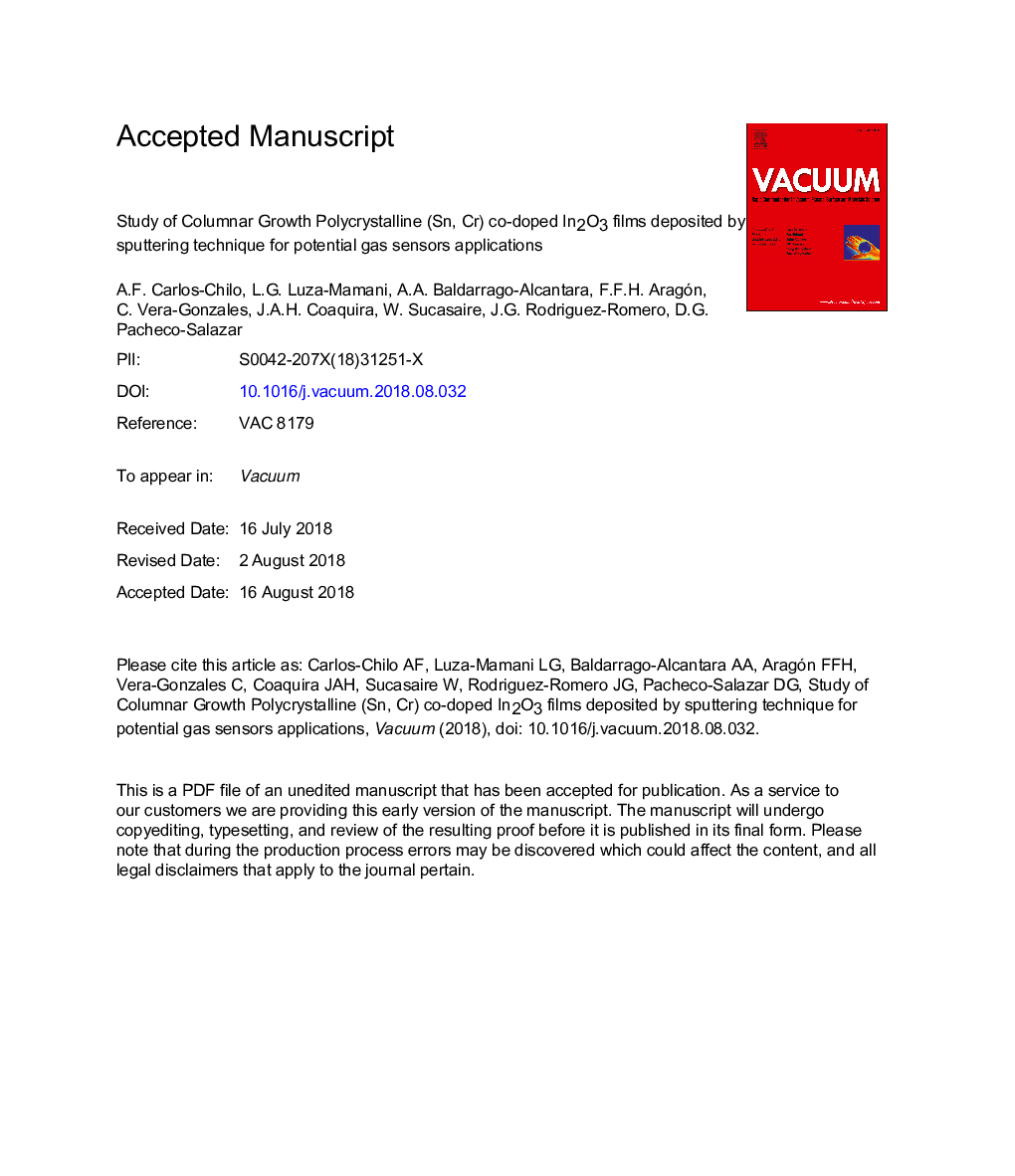| Article ID | Journal | Published Year | Pages | File Type |
|---|---|---|---|---|
| 11032779 | Vacuum | 2018 | 18 Pages |
Abstract
In this work, (Sn, Cr) co-doped In2O3 polycrystalline films were grown at room temperature by sputtering method using a base pressure of â¼5â¯Ãâ¯10â2â¯mbar (a low vacuum condition) in order to improve the oxidation process and reduce the time of films production. The films were grown using different deposition times by the sputtering technique onto glass substrate using an InCrSn target. The films were thermal annealing (TA) at two different temperatures at 500 and 650â¯Â°C in air atmosphere for a period of 2â¯h. The films were characterized by mean of X-ray diffraction (XRD), scanning electron microscopy (SEM) and UV-vis. XRD patterns of films subjected to TA at 500â¯Â°C shows a poorly crystallinity with certain degree of amorphicity, evidenced by broad peaks. Meanwhile, films subjected to the TA at 650â¯Â°C show a good crystallinity. The formation of the In2O3 phase was found in all samples. Meanwhile, the formation of Cr3O4 and CrO2 phases was detected in the thicker and thinner films, respectively. From SEM images the films evidence a columnar growth with a good homogeneity. The optical band energy gap â¼3â¯eV below to the expected value for In2O3 bulk (3.75â¯eV) was determined in all samples, which was associated to the formation of impurity energy levels within the forbidden band, due to the doping process. Furthermore, the films show a sensing response to acetone gas. These results makes (Sn, Cr) co-doped In2O3 a promising system for gas sensing application.
Related Topics
Physical Sciences and Engineering
Materials Science
Surfaces, Coatings and Films
Authors
A.F. Carlos-Chilo, L.G. Luza-Mamani, A.A. Baldárrago-Alcántara, F.F.H. Aragón, C. Vera-Gonzales, J.A.H. Coaquira, W. Sucasaire, J.G. Rodriguez-Romero, D.G. Pacheco-Salazar,
